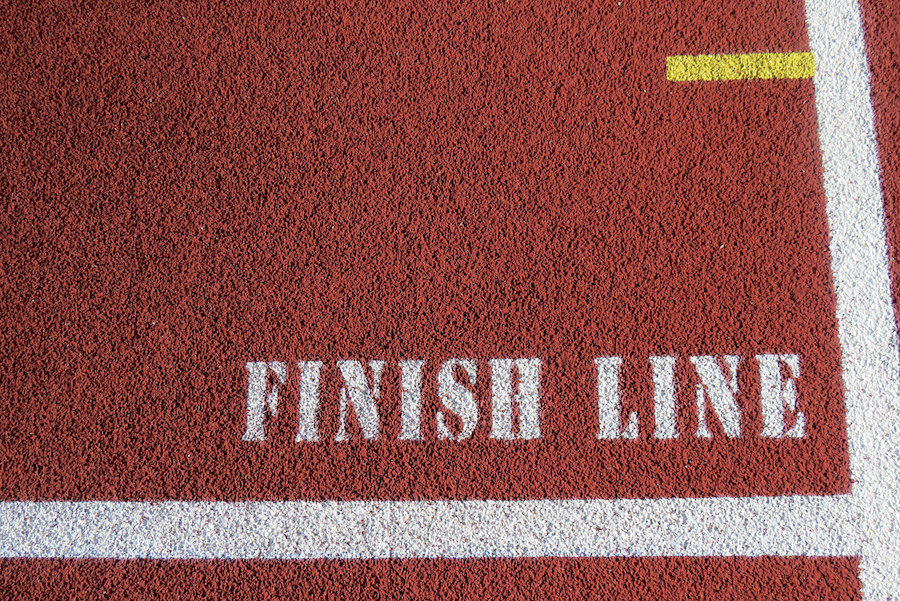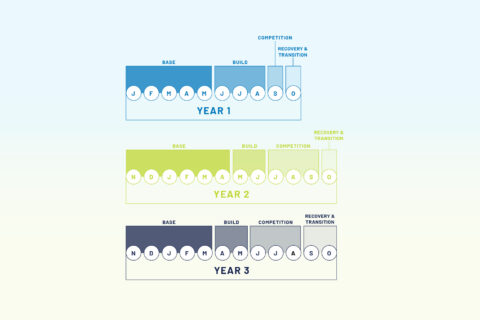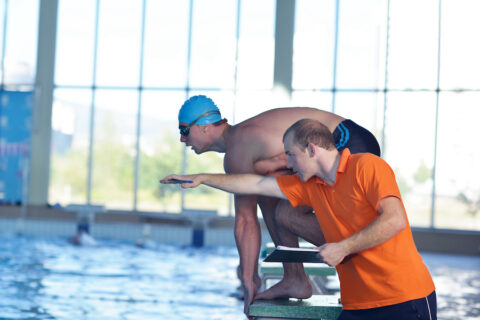How can you assess your client’s goal to ensure a sound seasonal outcome? What things should you consider? The SMART goal-setting assessment tool is used for setting personal and professional goals, in sport, business, and life. Good goals are Specific, Measurable, Achievable, Relevant, and Time-bound.
You may find that your client’s first attempt at goal setting fits all of the SMART criteria. If it does, then the two of you are ready to start planning the season and making race plans. If not, take the time to help the athlete better define their focus. As we review the criteria, I’ll expound on the case studies from Defining the Athlete’s Goal, Some Hits and Misses.
Specific
In Case Study #1 the athlete and I had a specificity problem. A goal needs to be well-defined. The words that the athlete chooses to define the goal are telling. When he told me what he’d like to do this season, I should have seen a red flag. “Like” is not a very specific word. Was he really committed to that goal? Or was it a more casual thing, lacking critical thought?
If the goal is not well-defined or action-oriented, it’s up to you as the coach to investigate further. Ask the athlete some follow-up questions:
- Are you dedicated to doing what it takes to achieve this specific goal?
- Is this something you’ve wanted to do for a long time?
- Why do you want to achieve this?
- Is there anything else that is important to you this season?
Keep digging until the goal becomes specific and both of you know exactly what you are aiming for. In the end, the goal should include a verb that leaves no questions about the desired outcome, such as, “Finish in the top 3 in each of my A-priority races.”

Measurable
What will success look like? Can it be measured? Running, for example, is quite easily measured once you know details such as course profile, altitude, and weather. Using this, and what is known about the runner’s past performances, you can set a specific goal time. From there, you can compare the athlete’s results with that time. Easy enough.
On the other hand, road cycling is a more difficult sport to measure. Aside from time trials, cycling goals usually come down to finishing rank. That means measuring the athlete against other athletes, over which you have no control. If an athlete sets a goal to be on the podium, as in Case Study #1, that goal depends largely on who shows up and what kind of shape they’re in.
This is why road race goals often come down to data that supports the probability of making the podium, metrics such as functional threshold power, sprint power, time to exhaustion, power-to-weight ratio, and other training data.
If the athlete accumulates good training data in such categories, they will greatly improve the likelihood of a higher finishing position or a possible podium. But realize these are indicators of performance that closely reflect, but do not absolutely measure, the race outcome.
Achievable
Can the athlete achieve the goal? Is it realistic? Can the athlete be trained to make it attainable? In Case Study #3 I quickly realized that the athlete could not achieve the goal. That may seem like a cruel assessment, but based on what I learned about him I simply didn’t believe he had the physiology to compete with the best in the world in his age group in running and cycling. Would it have been possible if we focused his training over a long period of time? Perhaps. But it would have taken years and a great deal of training load to pull it off.
While my client may have been willing to put in the hours, given his career as a physician, he simply didn’t have the time. I also doubt that his body would have been capable of handling the necessary load. It would be a long and daunting task. He would undoubtedly have faced frequent injuries and burnout. The bottom line is that achieving his goal was probably unachievable given his physical make up and time available. It’s a good thing luck was on our side.
Relevant
This is perhaps the trickiest criteria. To know if the goal is relevant, you have to ask the athlete why this particular goal is so important to them. In asking for the athlete’s “why,” we are delving into the psychological side of goal setting.
In Case Study #3 the athlete told me upfront why he has set such a high goal: His life was in shambles, and he saw qualifying for Kona as something that would bring meaning not only to his training, but also to his life.
In Case Study #2 the athlete’s why had a lot to do with how he was perceived by his fellow triathletes and how he felt about himself. He had great respect for Ironman athletes and it’s my belief that he wanted to experience the same respect from his friends.
Revisiting Case Study #1, the athlete held his competitor in high regard and his own results never reached that high mark. Winning was his real goal—competing at the very highest level.

Time-bound
The goal must be defined in terms of when it will be achieved. In Case Study #3 there is some possibility that the athlete could have achieved his Ironman-qualifying goal given enough time, as in years. How many years was an unknown.
Perhaps we could have agreed to set that goal aside for a time and focus instead on metrics that were achievable within a single season, such as finishing a half Ironman. And perhaps the following year would have been devoted to a faster half-distance finish time, along with, perhaps, finishing a full Ironman.
Such carefully measured small steps could have gone on for several years. Could the athlete hang in there with multi-year goals that would (hopefully) culminate in qualifying for Kona? Maybe. That’s something I could have pursued with him. But luck intervened.
Progressing toward a SMART goal
If the goal hits all five criteria, then you have a well-defined goal that both you and the athlete can fully accept and agree to as a shared mission. Now you’re ready to start training toward the goal.
As the season progresses, it’s critical that you not make assumptions about the athlete’s feelings toward the goal or assume that you understand their perspective. Even when the evidence seems to justify the goal, continue asking the athlete probing questions about details around training and racing, adhering to the SMART criteria. Make sure you and the athlete continue to be in complete agreement. If not, keep probing.
The athlete may become vague about aspects of the goal over the course of training. Help them define any uncertainty using the relevant criteria. Ask the right questions and seek a depth of understanding so both of you can answer the question: What exactly are we aiming for this season?





